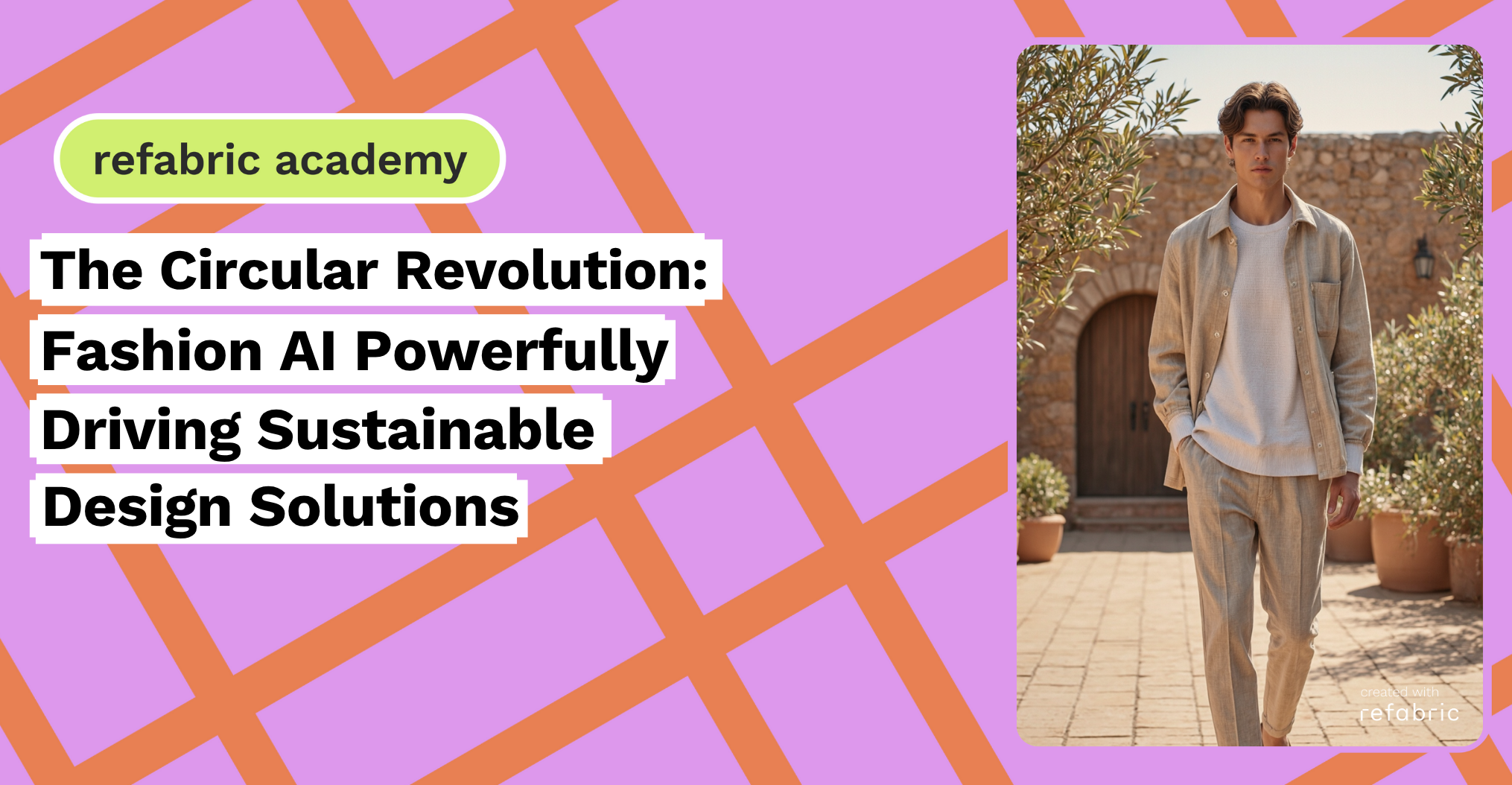Fashion AI is revolutionizing sustainable fashion by empowering brands to close the loop on design, production, and consumption. In an industry historically associated with overproduction and waste, AI-driven solutions are paving the way for circularity, a system where products are designed to minimize waste, maximize material reuse, and extend the lifecycle of every garment.
Understanding Circular Fashion
Circular fashion challenges the traditional linear model of “take, make, waste.” Instead, it promotes a closed-loop system where clothes are designed with longevity, recyclability, and regeneration in mind. Fashion AI is central to enabling this shift, as it offers data-driven tools to optimize design, predict product lifespan, and guide material selection.
This approach doesn’t just benefit the environment; it also aligns with growing consumer demand for ethical and eco-friendly products. Brands leveraging fashion AI are not only reducing their ecological footprint but also enhancing their market relevance in an increasingly conscious economy.
Fashion AI and Material Optimization
One of fashion AI’s most impactful applications lies in material optimization. AI algorithms analyze vast datasets to suggest the most sustainable materials based on durability, recyclability, and environmental impact. This means that designers can make informed choices from the very first sketch, ensuring that the fabrics they choose contribute to a circular lifecycle.
Moreover, fashion AI supports zero-waste pattern making by efficiently mapping out how fabric should be cut to minimize offcuts. This not only conserves materials but also reduces production costs, a win-win for sustainability and profitability.
Extending the Life Cycle of Garments
Another critical aspect of circular fashion is extending the lifespan of products. Fashion AI helps brands design garments with longevity in mind by predicting how materials will age, wear, and perform over time. AI can simulate how different fabrics respond to washing, sunlight, and general use, allowing designers to tweak their choices before a garment ever hits production.
Additionally, AI-driven platforms can suggest design modifications that facilitate easy repairs or adaptations, making clothes more versatile and durable. This contributes to reducing textile waste by encouraging consumers to keep and use garments longer.
Regenerative Design Approaches
Regenerative fashion goes beyond sustainability by actively restoring and replenishing resources. Fashion AI is enabling this frontier by identifying innovative materials like bio-based fabrics, mycelium leather, or algae-based textiles that can regenerate naturally.
AI also aids in developing modular designs, garments made of interchangeable parts that can be easily updated or replaced. This reduces the need for entirely new pieces and keeps clothing relevant longer. Through continuous learning, fashion AI identifies which regenerative practices are most effective, enabling brands to stay ahead in the sustainability game.
Fashion AI’s Role in Closing the Loop
Perhaps one of the most exciting roles of fashion AI in circular fashion is its capacity to create closed-loop systems. By tracking products through their entire lifecycle, from production to end-of-life, AI enables brands to implement effective recycling or upcycling programs.
For example, AI can help catalog fabric types, dyes, and treatments used in each garment, making it easier to sort and recycle them appropriately. This data transparency empowers both brands and consumers to participate in more responsible disposal and re-entry of textiles into the production cycle.
The Consumer Connection
Fashion AI is also bridging the gap between brands and consumers by offering insights into customer preferences and behavior. This ensures that brands produce items that are more likely to be worn, loved, and kept, reducing the risk of unsold inventory ending up in landfills.
Moreover, AI can power digital platforms that educate consumers about how to care for, repair, or recycle their garments. This fosters a more engaged and responsible customer base, further supporting the principles of circularity.
A Smarter, Greener Future
The fashion industry stands at a pivotal moment where innovation and sustainability must go hand in hand. Fashion AI is not just a trend, it’s a transformative force that helps brands design smarter, reduce waste, and build products that honor both people and the planet.
By embracing fashion AI, the industry can fully commit to the circular revolution, creating systems where style, sustainability, and innovation coexist seamlessly.
